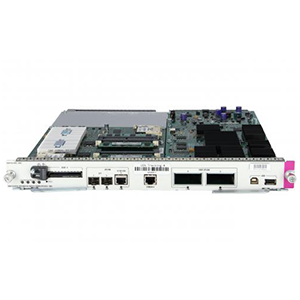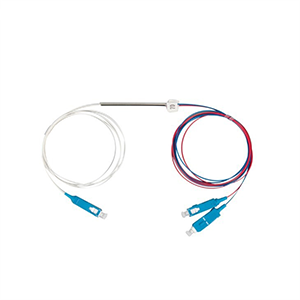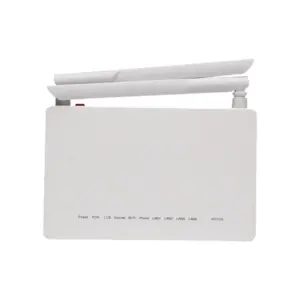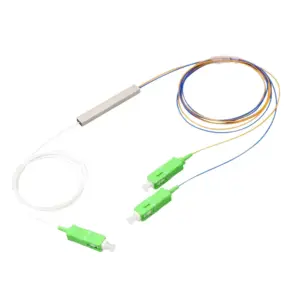Switches play a key role in the network. This article will explore how to connect multiple switches. We will first review the basic working principles of switches and their role in the network architecture. Next, we will introduce the common types of connection ports between switches and their applicable scenarios.
Then, we will explain the basic steps of interconnecting two switches, including physical connection and logical configuration. Finally, we will analyze the advantages of using redundant links, explain the considerations for selecting port bandwidth, and introduce the best practices for managing switch interconnection to provide users with reference.
The function of switches in the network
The switch is mainly responsible for receiving, processing and forwarding data packets in the network, and accurately sending data packets to the destination device through the MAC address table. It can effectively isolate network traffic, reduce data conflicts, improve bandwidth utilization, and support efficient communication between multiple devices. Switches are widely used in local area networks (LANs) to enhance network performance and stability.
1. Basic working principle of switch:
- Data frame forwarding based on MAC address:
- The switch forwards data to the corresponding port according to the destination MAC address in the data frame.
- Realize interconnection and intercommunication of internal devices in LAN:
- The switch connects various network devices in the LAN and provides interconnection between devices.
2. The position of switch in network architecture:
- As a key interconnection device in the network:
- The switch plays a key role in connection and interconnection in the network.
- It connects different network segments to achieve end-to-end communication.
The switch realizes the interconnection and communication between devices in the LAN by forwarding data frames based on MAC addresses. It is an indispensable key component in the network structure, playing the role of connection and exchange.
The wide application of switches enables the internal devices of the LAN to exchange data efficiently and reliably, meeting the needs of users for network interconnection. With the continuous development of network technology, switches are also constantly upgraded and optimized to provide users with more intelligent and high-performance network interconnection services.
Common ways to connect switches
Common ways to connect switches include: using Ethernet cables to connect computers, routers or other network devices through RJ45 ports; using fiber modules and fiber cables for high-speed long-distance connections; stacking multiple switches together through stacking interfaces to expand network capacity and improve redundancy. Choosing the right connection method can improve network performance and stability.
1. Common connection ports between switches:
- Ethernet electrical port:
- Switches are generally equipped with Ethernet electrical ports for connecting other network devices.
- These Ethernet electrical ports are based on the RJ-45 interface standard.
- Fiber optic port:
- High-end switches also provide fiber optic interfaces for connecting fiber optic network devices.
- There are many types of fiber optic interfaces, such as SC, LC, FC, etc.
2. Applicable scenarios of different types of ports:
- Ethernet electrical ports are suitable for short-distance connections:
- Ethernet electrical ports are suitable for short-distance network interconnection, such as within a few dozen meters.
- Fiber optic ports are suitable for long-distance high-bandwidth connections:
- Fiber optic ports can support long-distance high-speed transmission and are suitable for scenarios that require high bandwidth and transmission distance.
- Applications such as data centers and backbone networks that have high requirements for bandwidth and distance.
In general, switches can be interconnected through Ethernet electrical ports and fiber optic ports. Ethernet electrical ports are suitable for local network interconnection with short distances and low bandwidth requirements, while fiber optic ports can meet the needs of long-distance and high-bandwidth network interconnection.
Choosing the appropriate switch port type for connection according to the bandwidth, distance and other requirements of the actual application scenario can ensure the high performance and reliability of the network. With the continuous upgrading of network application requirements, the application of fiber optic ports is becoming more and more extensive.
How to interconnect two switches
Two switches are usually interconnected by connecting their ports using Ethernet cables. This can be achieved by following the steps below: Choose a suitable network cable (such as Cat5e, Cat6) and connect the ports of each switch through the network cable; ensure that the port configuration is correct, no cross-cable is required, and modern switches support automatic identification. For higher bandwidth requirements, fiber optic modules and fiber optic cables can be used for connection.
The basic steps for interconnecting two switches are as follows:
1. Determine the interconnection port type and specifications:
- Check the available port types of the two switches, such as Ethernet electrical ports or fiber optic ports.
- Ensure that the port types and specifications (speed, duplex mode, etc.) of the two switches match.
2. Use appropriate network cables/optical fibers for physical connection:
- If you use an Ethernet electrical port, you need an Ethernet cable for connection.
- If you use an optical fiber port, you need a matching optical fiber cable for connection.
- Ensure that the physical connection is firm and reliable.
3. Configure logical interconnection between switches:
- Set VLAN parameters to ensure that the two switches are in the same VLAN.
- Configure spanning tree protocol (STP/RSTP) to prevent network loops.
- Configure other parameters such as aggregated links, QoS, etc. as needed.
Through the above steps, the two switches can be physically and logically interconnected. This can expand the network scale and improve the reliability and flexibility of the network.
In actual operation, it is also necessary to reasonably plan and configure the interconnection scheme between switches according to the network topology and business needs. At the same time, attention should be paid to ensuring the compatibility between switches and ensuring that the interconnection can proceed smoothly.
Suggestions for optimizing the switch interconnection scheme
The optimization of the switch interconnection scheme aims to improve network performance and reliability. It is recommended to adopt a hierarchical architecture, select appropriate switch types (such as core, aggregation and access layers), and use high-speed links and redundant designs to reduce failure points.
In addition, the implementation of VLAN and link aggregation can improve bandwidth utilization and security. Regularly monitor and maintain the network status to ensure system stability and meet growing business needs.
1. Advantages of using redundant links:
- Improve network reliability:
- Using redundant links can achieve link backup and improve network availability.
- When the main link fails, it can quickly switch to the backup link.
- Load balancing:
- By sharing the load of multiple links, the overall transmission bandwidth can be improved.
- It helps to alleviate the congestion of a single link.
2. Precautions for selecting port bandwidth:
- Reasonably select port speed according to traffic demand:
- Evaluate current and future network traffic demand and select appropriate port bandwidth.
- Avoid bottlenecks caused by low port bandwidth and do not waste idle bandwidth resources.
3. Best practices for managing switch interconnection:
- Monitor link status:
- Regularly check the connectivity and transmission performance of the link to detect problems in a timely manner.
- Regular maintenance and optimization:
- Regularly evaluate and optimize the switch interconnection solution.
- Adjust VLAN, STP and other configuration parameters according to changes in business needs.
In short, optimizing the switch interconnection solution needs to be considered from multiple perspectives:
- Using redundant links can improve reliability and load balancing;
- Reasonably select port bandwidth according to actual needs;
- Ensure continuous optimization of the interconnection solution through status monitoring and regular maintenance.
This will not only improve the performance and availability of the network, but also better meet the needs of future business development.
Summary
Reasonable planning and management of switch interconnection is the key to ensuring network performance. Our company has long focused on the research and development and application of network infrastructure products and has rich practical experience. We provide a full range of switch products that can meet the needs of different network scenarios.
Our products use industry-leading technical solutions and have achieved excellent levels in switching performance, reliability and manageability. At the same time, our engineering team will provide you with professional demand analysis and solution design services to ensure that the deployed switch interconnection solution can meet your actual needs to the greatest extent. Contact us now to learn more.
Switch Connection FAQ
The simplest way is to use an Ethernet cable (copper) to connect a port on one switch to a port on the other switch.
Yes, you can connect switches using fiber optic cables if they have the appropriate ports or SFP modules.
For modern switches, a straight-through cable is usually sufficient, as most switches support Auto-MDI/MDI-X.
Improper connections can lead to network loops, which can cause broadcast storms and degrade network performance.
You need to configure VLANs on both switches to ensure they communicate properly. This often requires a managed switch.
Basic connectivity may not require configuration, but advanced features like VLANs, link aggregation, or spanning tree protocol might need settings.
Yes, you can connect multiple switches in a daisy-chain or star topology to expand your network.
Link aggregation combines multiple connections for increased bandwidth and redundancy; it’s useful for high-traffic networks.
Yes, switches from different manufacturers can usually connect, as long as they support standard Ethernet protocols.
Check cable connections, verify port statuses, ensure compatible settings, and look for any configuration errors or network loops.





